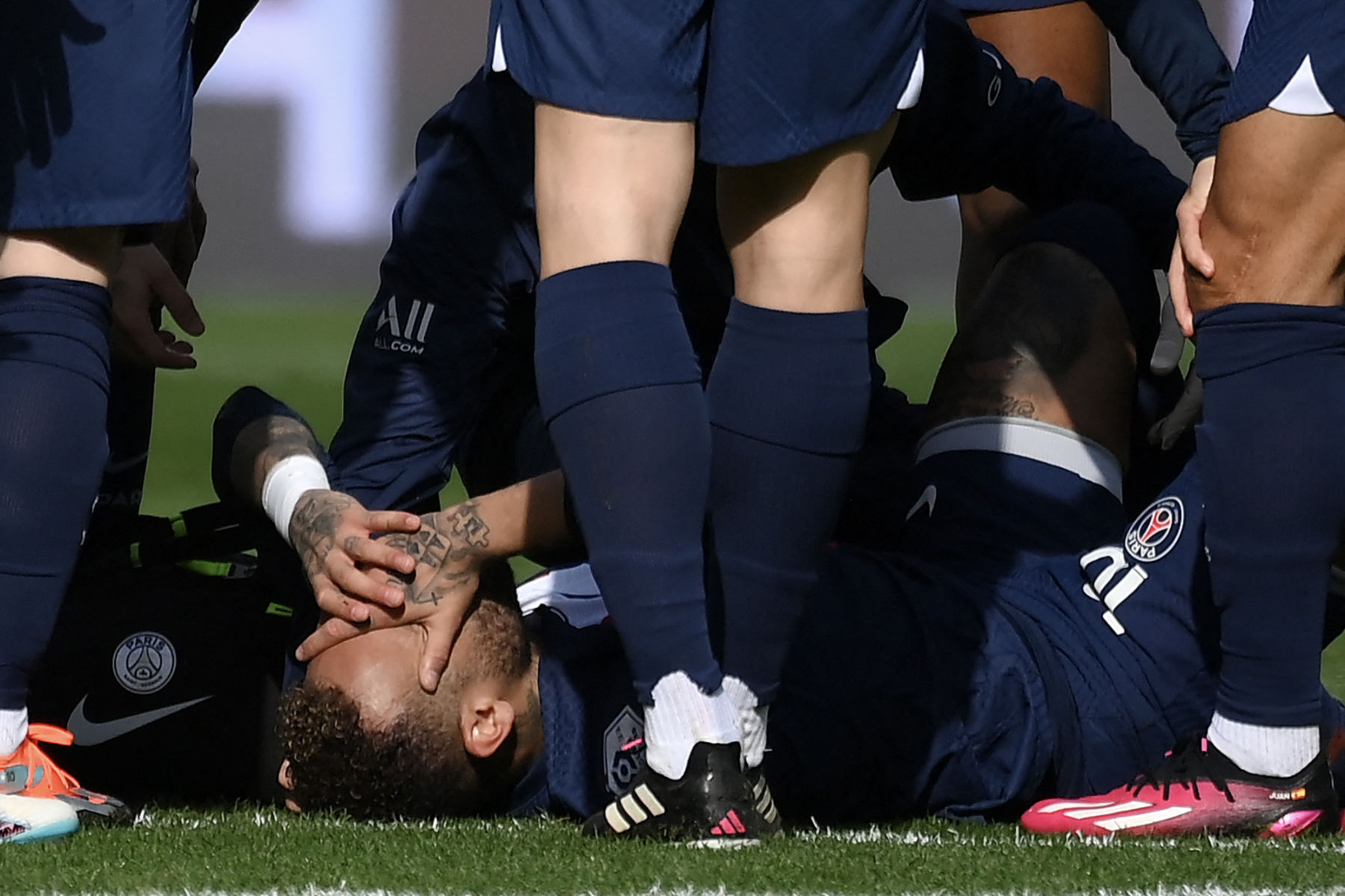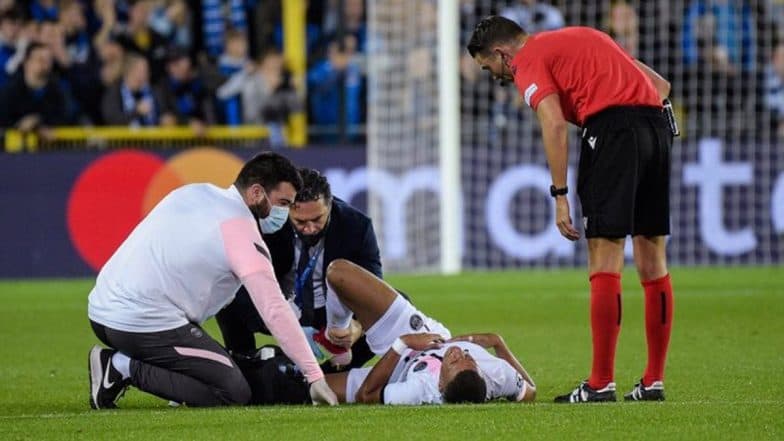
The Silent Battle: Navigating Ligue 1’s Latest Injury Landscape
In the high-octane world of professional football, where every sprint, tackle, and pivot pushes the human body to its limits, injuries are an inescapable reality. They are the silent architects of narratives, capable of derailing title aspirations, shattering European dreams, and even dictating the grim reality of relegation battles. Ligue 1, with its unique blend of technical flair, physical intensity, and burgeoning young talent, is no stranger to this constant struggle. As teams navigate demanding domestic schedules, often compounded by European commitments and international breaks, the medical rooms become as crucial as the training pitches.
This article delves into the current injury landscape across France’s top flight, examining how key players’ absences are shaping the fortunes of their clubs, the tactical adjustments managers are forced to make, and the broader implications for the league’s competitive balance. While specific injury lists are fluid and can change daily, we will focus on persistent issues, long-term absences, and the impact of significant setbacks that have defined – or continue to define – the season for various prominent Ligue 1 contenders.
Paris Saint-Germain: Managing the Superstars and Defensive Foundations
Unsurprisingly, the spotlight often falls on Paris Saint-Germain, not just for their star power but also for the sheer volume of high-profile players who have, at various times, graced their injury list. While the likes of Kylian Mbappé have shown remarkable resilience, other key figures frequently find themselves sidelined, forcing coach Luis Enrique to constantly shuffle his pack.
One of the most persistent concerns for PSG in recent seasons has been the fitness of their defensive pillars. Presnel Kimpembe, a vital figure at the heart of their defence, has endured a torrid time with injuries, particularly a severe Achilles tendon rupture that kept him out for an extended period. His prolonged absence has deprived PSG of a powerful, left-footed centre-back, impacting their build-up play and defensive solidity. While his return is eagerly anticipated, integrating him back into the demanding rhythm of top-tier football without risking recurrence is a delicate balancing act.
Similarly, the defensive midfield has often been a fragile area. Players like Fabian Ruiz or Manuel Ugarte, while talented, have faced spells on the sidelines due to muscle strains or knocks. These absences, though sometimes short-term, disrupt the crucial midfield pivot, affecting ball retention, pressing intensity, and the protection offered to the backline. When one of these anchor men is out, it often forces other players into unfamiliar roles or exposes the defence more directly.
Further up the pitch, the creative sparks also have their vulnerabilities. While Ousmane Dembélé arrived with a well-documented history of muscular injuries from his time at Barcelona, PSG’s medical staff have been working diligently to manage his load. Despite minor scares, his availability has been relatively good, but the threat of a relapse always looms large, given his explosive, high-intensity playing style. The departure of Neymar, himself a frequent visitor to the treatment table, has arguably reduced one source of high-profile injury drama, but it underscores the constant challenge of maintaining peak fitness for world-class athletes.
PSG’s immense squad depth generally allows them to absorb these blows better than most. However, the accumulation of injuries, especially in crucial phases of the Champions League, can stretch even their formidable resources, forcing tactical compromises and potentially weakening their overall cohesion.
Olympique Marseille: The Price of Intensity
Marseille, known for their passionate approach and high-energy football, often pay a price for their intensity in terms of player availability. Their dynamic, pressing style demands peak physical condition, and injuries to key players can significantly blunt their edge.
Central to their tactical setup are wing-backs and wide players who are expected to cover immense ground. Jonathan Clauss, a vital attacking and defensive outlet on the right flank, has periodically struggled with muscular issues. His absence not only removes a key source of crosses and attacking thrust but also forces tactical reshuffles in a system heavily reliant on wide play.
In midfield, the likes of Valentin Rongier have been crucial for their tenacity and ball winning. Prolonged absences for such workhorses can leave a gaping hole, forcing less experienced or naturally defensive players to step up, potentially exposing the team defensively or limiting their ability to transition quickly. Strikers too, like Pierre-Emerick Aubameyang or past figures like Alexis Sanchez, while often durable, have faced minor knocks that disrupt their rhythm and goal-scoring output.
Marseille’s challenge lies in not having the same financial muscle as PSG to simply replace injured stars with equally talented backups. Their squad depth, while decent, is more reliant on versatility and the seamless integration of academy graduates. Therefore, each significant injury hits harder, often directly impacting their pursuit of European qualification or a strong domestic finish.
AS Monaco: Attacking Prowess Under Threat
AS Monaco, often characterized by their vibrant attacking football and reliance on individual brilliance, can see their offensive rhythm severely disrupted by injuries to their creative forces.
Aleksandr Golovin, the Russian playmaker, is often the heartbeat of their attack. His vision, dribbling, and ability to unlock defences are invaluable. When he is sidelined, even for a few games, Monaco’s creative output can noticeably dip. Similarly, key forwards or wide players like Wissam Ben Yedder or Takumi Minamino – who are crucial for goals and assists – face their own battles with fitness. A muscle strain for a prolific striker can be catastrophic for a team that relies heavily on their clinical finishing.
Monaco’s squad, while talented, sometimes lacks the sheer depth to absorb multiple simultaneous injuries to their starting eleven, particularly in the attacking third. This often forces them to rely on younger, less experienced players, or to adopt a more conservative tactical approach, which can undermine their natural attacking instincts.
Olympique Lyonnais: Compounding Struggles
For a club like Olympique Lyonnais, who have recently endured a challenging period, injuries can exacerbate existing problems. When a team is struggling for form and confidence, the absence of key leaders or consistent performers can be devastating.
Alexandre Lacazette, the veteran striker, carries a significant goal-scoring burden. Any absence for him, even a minor one, is a huge blow, as his goals are often the difference between a draw and a win. Similarly, young talents like Rayan Cherki, who are expected to provide creativity, can also be susceptible to the physical demands of professional football.
Lyon’s injury woes often highlight the fragility of their squad depth and the pressure on their medical staff to get players back on the pitch quickly and safely. For a team trying to climb out of a difficult position, every player’s availability is paramount.
Other Notable Clubs and Recurring Themes
Across the league, other clubs face similar battles:
- Lille OSC: Often relying on a lean, cohesive squad, injuries to key figures like Jonathan David (their prolific striker) or influential midfielders can severely impact their European aspirations. Their reliance on tactical discipline means any disruption to their established XI is felt keenly.
- OGC Nice: Known for their defensive solidity, injuries to their centre-backs or defensive midfielders can undermine their core strength, forcing them to become more open than they would prefer.
- Stade Rennais: A club that often balances domestic and European commitments, Rennes have seen their progress hampered by injuries to creative players or full-backs who are crucial to their attacking patterns.
- RC Lens: After their remarkable rise, Lens’s physical, high-intensity style makes them vulnerable to injuries, especially to their engine room midfielders or attacking wing-backs who cover huge distances.
The Broader Impact: Tactical Shifts, Squad Depth, and Mental Fortitude
Beyond individual player absences, injuries have a profound and multifaceted impact on the league:
-
Tactical Adjustments: Managers are constantly forced to adapt their game plans. A team built around a specific playmaking midfielder might have to switch to a more direct style when he’s out. The loss of a pacey winger might necessitate a shift to a narrower formation. These changes can disrupt team cohesion and require players to adapt quickly to new roles.
-
Squad Depth Testing: Injuries are the ultimate test of a club’s squad depth. Teams with strong academies or shrewd recruitment policies that ensure quality backups are better equipped to weather these storms. For clubs with tighter budgets, the loss of a key player can expose glaring weaknesses and force reliance on inexperienced youth or players out of position.
-
Transfer Market Influence: Injuries often dictate mid-season transfer activity. A sudden long-term injury to a crucial player can force clubs into the market for emergency signings, often at inflated prices, to fill the void.
-
Mental Fortitude: The psychological toll on injured players is immense. The isolation of rehabilitation, the fear of recurrence, and the frustration of watching from the sidelines can be challenging. For the team, repeated injuries to key players can also affect morale, leading to a sense of vulnerability and uncertainty.
-
The Role of Sports Science: Modern football clubs invest heavily in sports science, physiotherapy, and data analytics to prevent injuries and accelerate recovery. Sophisticated monitoring systems track player load, sleep patterns, and biochemical markers to identify fatigue and potential injury risks. Despite these advancements, the sheer volume of games and the physicality of the sport mean injuries remain an ever-present threat.
The Road Ahead: A Continuous Battle
As the Ligue 1 season progresses, the battle against injuries will continue unabated. For coaches, it’s a constant puzzle of balancing player welfare with performance demands. For medical teams, it’s a relentless pursuit of optimal recovery and rehabilitation. And for the fans, it’s a sobering reminder that while skill and tactics dominate the headlines, the unsung heroes in the medical room and the resilience of players battling back from adversity are equally critical to the unfolding drama of French football. The teams that manage this silent battle most effectively often find themselves celebrating success when the final whistle blows on the season.



